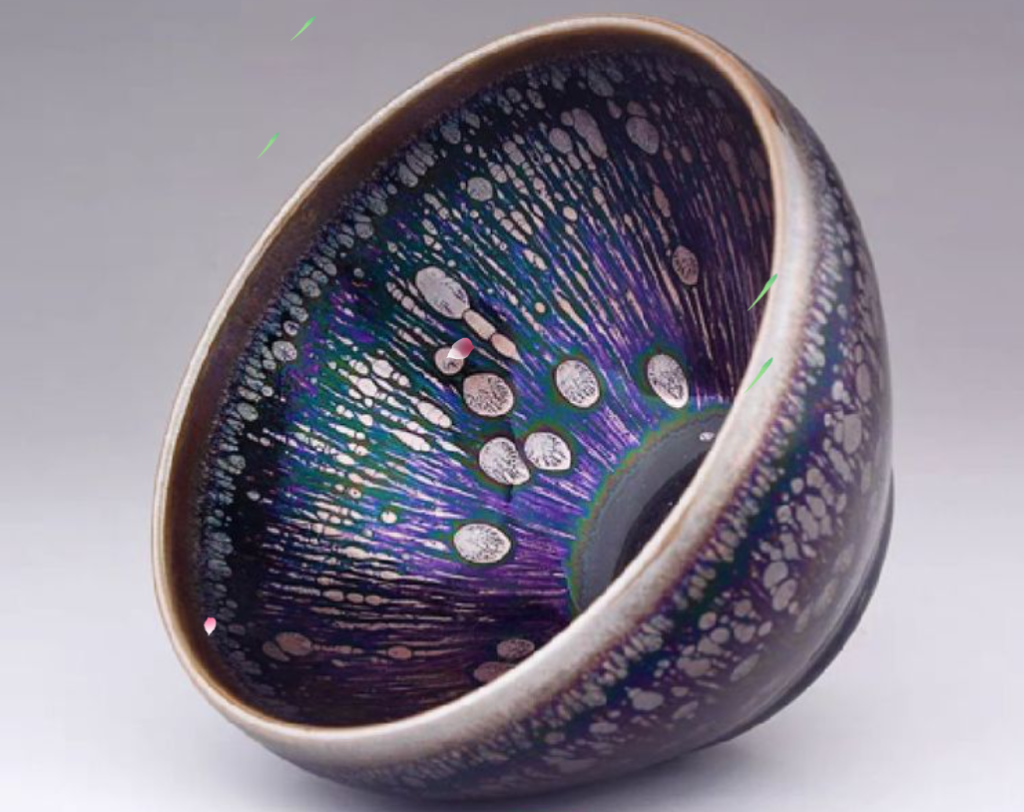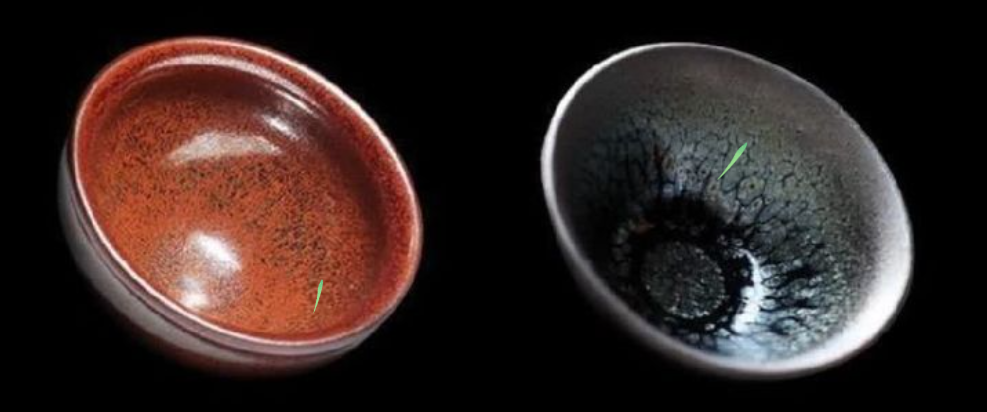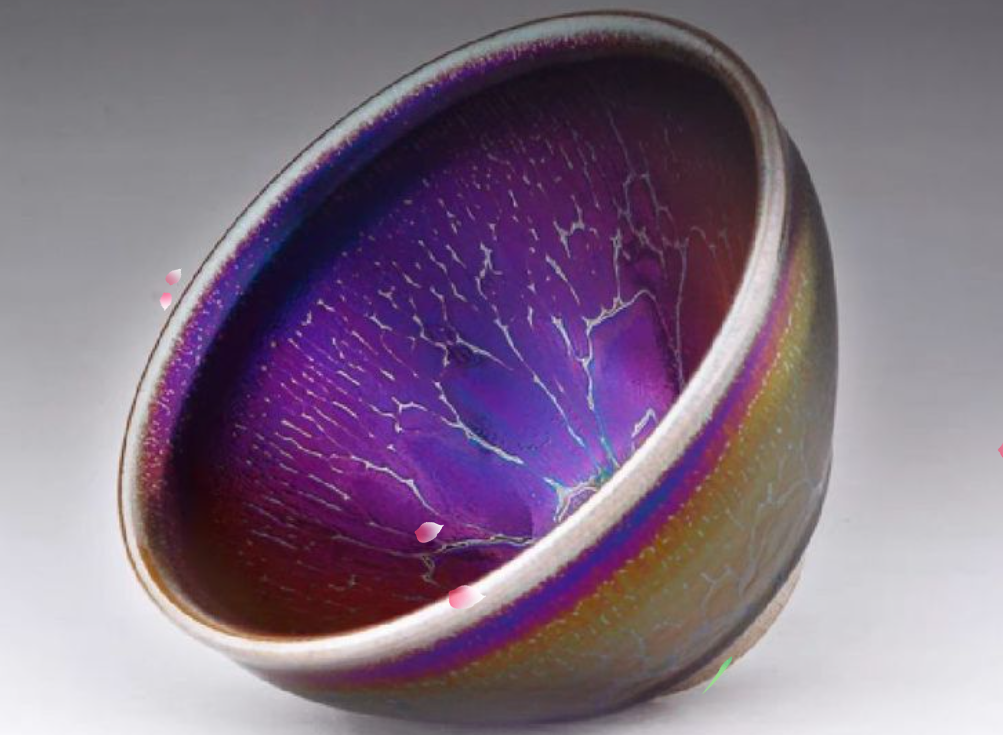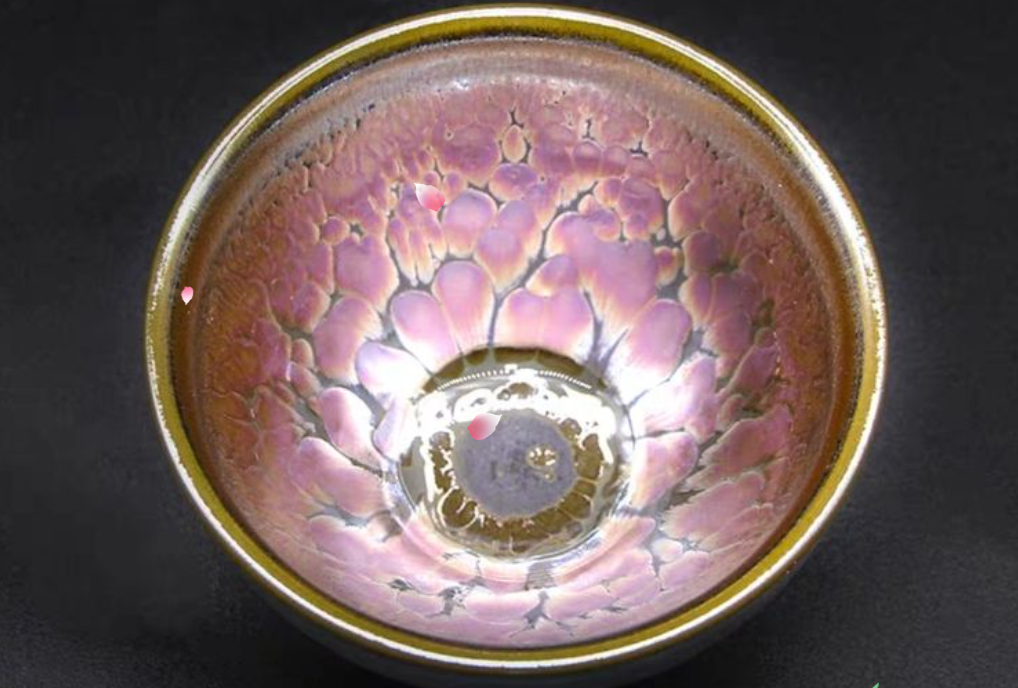1. Basic Knowledge of Jianzhan
Jianzhan refers to black-glazed tea cups produced in the Jian Kiln, primarily during the Song Dynasty. Known for their dark glaze, these cups were once exclusively used by the royal family.
Jianzhan became especially famous due to the tea-drinking culture of the time. The unique glaze and craftsmanship of Jianzhan are revered even today, with this type of pottery being called “Tenmoku” in Japan and Taiwan.
Historically, local people also referred to Jianzhan as “Black Mud Cup” or “Treasure Bowl.”

Jianzhan is renowned for its rich iron content and intricate glaze. The firing process is highly challenging, resulting in a low success rate—only about 20% of pieces make it through the kiln, and fewer still are considered high-quality.
In recent years, Jianzhan’s value has skyrocketed at auctions, further cementing its status as a prized collectible.

2. What are the benefits of Jianzhan?
Jianzhan is praised for its high iron content (7-10%), which can absorb trace minerals from water, softening it and enhancing the taste of tea. Additionally, its porous structure can reduce water hardness, making tea smoother and more flavorful.
Tea enthusiasts often notice an enhanced taste when drinking from Jianzhan, as it preserves the freshness and richness of the brew.
3. Is Jianzhan safe to use?
Yes, Jianzhan is made from natural materials like clay and plant ash, and is fired at high temperatures (over 1300°C), ensuring its safety for everyday use.
The iron-rich clay and unique firing technique create a distinctively durable and non-toxic cup.

4. How to prepare a Jianzhan cup for first-time use?
- Wipe the cup with a damp cloth to remove dust and rinse with water.
- Boil the cup in purified water, turn off the heat, and let it sit for 30 minutes before removing it.
- Boil the cup again, this time in tea water, and allow it to steep for one hour before air drying.
5. Is Jianzhan ideal for drinking tea?
Jianzhan was designed for tea, and its unique characteristics make it a favorite for tea lovers. The cup enhances the flavor and experience of tea, making it a perfect choice for daily use.
6. How to care for Jianzhan after use?
After drinking tea, rinse the cup with hot water before cleaning. Dry it with a soft cloth or let it air dry in a ventilated area. Avoid using rough materials that could scratch the glaze, as this may dull its shine.

7. Common Jianzhan Glaze Patterns
Jianzhan cups have several distinct glaze patterns, including:
- Oil Spots
Small metallic dots resembling oil droplets. - Rabbit’s Fur
Fine streaks resembling rabbit fur. - Tenmoku
Deep black glaze with shimmering, cosmic spots. - Iron Rust
Reddish spots on a dark surface.
Each pattern has unique characteristics that make it special, contributing to the overall beauty and value of the cup.
8. How to identify a real Jianzhan?
The most distinguishing feature is its iron-rich body. Authentic Jianzhan has a dense, heavy feel and produces a metallic sound when tapped.

Additionally, it often shows small, natural imperfections from the firing process, such as pinholes or uneven glaze.
9. What are the different shapes of Jianzhan?
The most iconic shape is the “束口” (constricted mouth), which is ideal for tea brewing. This design helps retain heat and prevents spillage, making it the preferred choice for serious tea drinkers.
10. Why do some Jianzhan cups develop rainbow colors?
With frequent use, the iron in the glaze reacts with minerals in the tea, forming a thin oxidation layer on the surface. This creates a rainbow-like effect, which is not only beautiful but also harmless, indicating the cup’s quality and authenticity.
